Structure of Chromosomes Class 10 Biology Notes. Chromosomes and cells play essential roles in the storage and transmission of genetic information. Visit official website CISCE for detail information about ICSE Board Class-10 Biology.
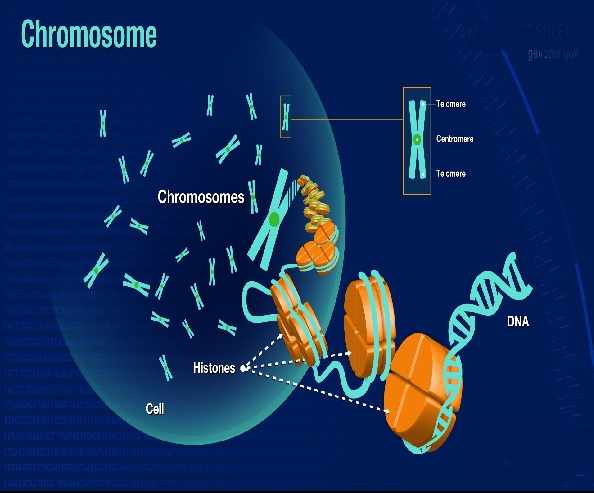
Structure of Chromosomes Class 10 Biology Notes
Definition: Chromosome are highly condensed and coiled chromatin fibres. Each species has a specific number of chromosomes.
For example:
1. Humans typically have 46 chromosomes (23 pairs), with one set inherited from each parent.
2. Other organisms, like fruit flies or dogs, have different numbers of chromosomes.
Types of Chromosomes:
1. Autosomes: These are the non-sex chromosomes. Humans have 22 pairs of autosomes.
2. Sex Chromosomes: These determine the biological sex of an individual. In humans, females have two X chromosomes (XX), and males have one X and one Y chromosome (XY).
Discovery of Chromosomes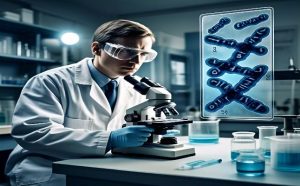
Discovery: Chromosomes first studied in 1882 by a German Scientist, Walther Flemming.
Structure of Chromosomes
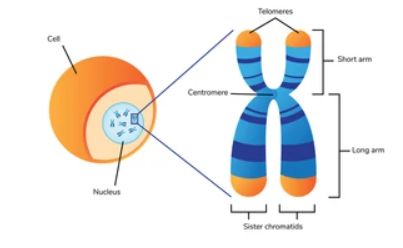
- Chromosomes are composed of proteins and DNA
- Chromatin: Complex of DNA and Protein is called Chromatin
- Within each chromosome, there are hundreds or thousands of genes that accurately encode various proteins in the cell.
- The structure of a chromosome is most clearly visible during cell division.
Components of Chromosomes
- Chromatid: A single strand of DNA and proteins that constitutes a chromosome.
- Centromere: The constricted region of the chromosome that holds the two chromatids together.
Chromatin
It ic composed of two component 1 DNA and 2. Histones
1. Molecular Structure of DNA
- Shape was first given by Watson and Crick
- A single DNA molecule is very large, and hence it is described as a macro-molecules.
- Each single DNA strand is composed of repeating nucleotide.
Components of Nucleotides
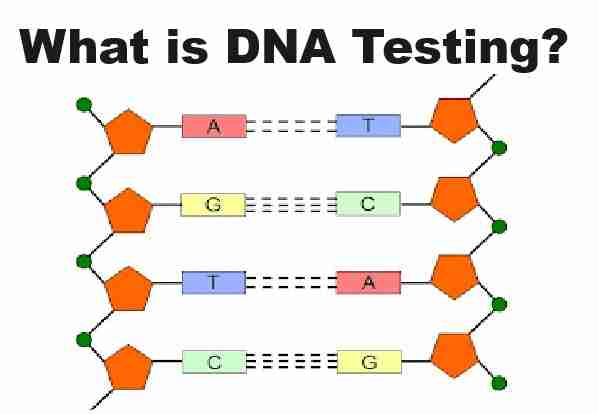
- Phosphate
- Sugar
- Nitrogenous Base– Nitrogenous bases are the fundamental building blocks of DNA and RNA,
Four types of Nitrogenous Bases:
- adenine (A)
- thymine (T)
- guanine (G)
- cytosine (C).
DNA
- DNA is a set of molecules responsible for carrying and transmitting hereditary information, or genetic instructions, from parents to their offspring.
- DNA, or deoxyribonucleic acid, is the molecule responsible for storing genetic information that dictates an organism’s traits, development, and functions.
- Its structure is a double helix, often described as a twisted ladder, composed of a sugar-phosphate backbone with base pairs (A-T, G-C) forming the rungs.
- Nucleotides: DNA is found in nearly all living organisms, including humans, and is a polymer made up of repeating units known as nucleotides.
Structure of DNA
- Double Helix: DNA is made of two long strands twisted together, forming a shape like a twisted ladder.
- Backbone: The sides of the ladder are made of sugar (called deoxyribose) and phosphate molecules that alternate.
- Rungs: The steps of the ladder are pairs of special molecules called nitrogenous bases. A always pairs with T, and G always pairs with C.
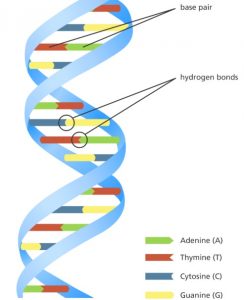
2. Histone Proteins:
- Histones are the proteins that help in the coiling and packaging of DNA into structural units called nucleosomes.
- The DNA strand winds around a core of eight histone proteins (called the histone octamer). Each such complex is called a nucleosomes.
What are Genes?
- A gene is the fundamental unit of heredity, a portion of DNA that provides instructions for creating specific proteins or functional RNA, which in turn determine inherited traits.
- Genes guide the construction and maintenance of cells, tissues, and organs within an organism.
- They are responsible for traits like eye color, height, and even the likelihood of developing certain diseases.
Body Instructions: Genes hold the information to create proteins
Function of of DNA:
Genes are composed of sequences of nucleotides (A, T, G, C), which form the code to produce proteins.
- Inheritance: Genes are passed from parents to children, which is why kids tend to share traits with their parents. You inherit two versions of each gene—one from your Father and one from your mother.
- Variation: While most genes are the same in all humans, small differences (mutations or variations) in genes lead to the diversity we see in people.

–: End of Structure of Chromosomes Class 10 Biology Notes :–
Please share with your friends if helpful
Return to :
- Concise Selina Biology Solutions for ICSE Class-10.
- Srijan Publications for ICSE Class-10 Biology Textbook
- Goyal Brothers Prakashan for ICSE Class-10 Biology Textbook
Thanks


